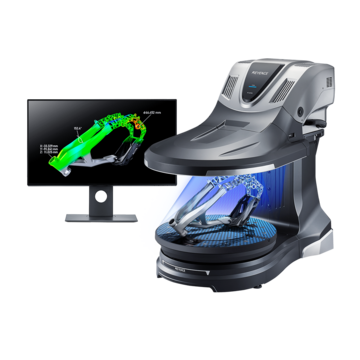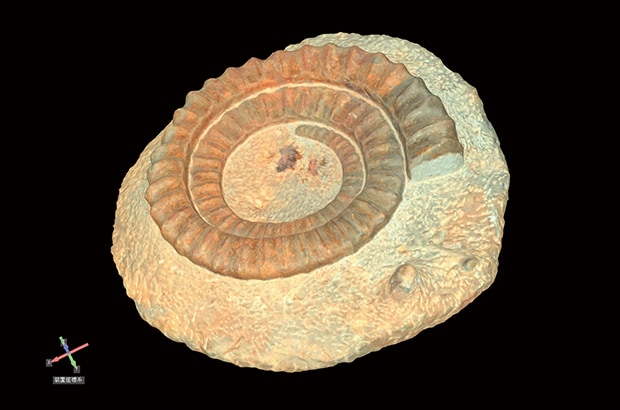
In recent years, a rapidly increasing number of cultural properties, such as handwritten documents, earthenware, and fossils, are being archived as digital data.
The reasons behind this include the rapid advances that information technology has made in society and the progress in 3D measurement technologies.
This page explains basic knowledge about digital archives, problems in conventional measurement methods used for digital archiving, and a solution to these problems.
Digital Archives
A digital archive is a system for using digital technologies to record various types of intellectual property, both tangible and intangible. Covering not only completed properties, but also the process by which they were created, digital archives are mainly used by museums and libraries to preserve their collections, and by companies and local governments to store their documents.
Digital archives do not just record materials digitally; they also facilitate data management, sharing, and searching, and make it possible to output the information to websites or other media. This allows archived data to be used for purposes including support for study and learning, economic expansion, and new creations.
For these reasons, digital archives are considered an important platform for value creation in intellectually active societies and social infrastructures.
We’re here to provide you with more details.
Reach out today!

How Digital Archives Are Created
Work for constructing a digital archive requires investigation of original artifacts and materials, work planning, digitalization and data processing, digital data management, and utilization of the data. This section explains this work.
Investigation and work planning
This is the preparation stage for digitalizing artifacts and original materials. Materials are classified into those that need to be digitalized and those that do not. For the materials that require digitalization, categories and supplementary information are added. The data is input into a PC or similar device in order to make it browsable in digital catalogs.
This makes it possible to identify the types and quantities of artifacts and original materials to be digitalized, and to save space required to store them. Additionally, the system functions that enable searching and sharing of the data are decided, and documents such as operating manuals are created.
Digitalizing and processing the materials
This step actually digitalizes the artifacts and original materials to be used in the digital archives. Digitalizing is done using scanning devices such as 3D scanners for three-dimensional objects, and flatbed scanners for documents and films. When digitalizing three-dimensional objects, information including colors and fine surface textures is acquired in addition to the shapes. Acquiring texture information is important, especially for earthenware and fossils, because the surface conditions indicate how these objects were preserved. When digitalizing documents, using optical character recognition (OCR) makes it possible to read text data efficiently and accurately.
The digitalized data is associated with categories and supplementary information before it is registered in the digital archive. Often it is necessary to digitalize a vast quantity of materials, and this requires scanners that can provide high work efficiency and good operability as well as high processing speeds.
Using digital data
Data that is registered in a digital archive becomes available as digital content for purposes such as creating replicas, presentation in exhibits, or making the data public on a website.
Contact us to learn more about how our advanced technology can help take your business to the next level.
Contact Us
Advantages of Digital Archives
One advantage of a digital archive is that, unlike unorganized backup data, anyone can use the contents freely regardless of time and place. Sharing and using digital data to meet needs can create various kinds of new value.
Preventing deterioration of materials
Because digital data contains information that is faithful to the conditions of the original artifact or material, these can be valuable materials when creating replicas. Replicas created using digital archives can be exhibited while valuable original artifacts and materials are kept in storage. This can limit access to and public exposure of the original artifacts and materials, protecting them from physical damage and deterioration.
Exhibition of replicas is effective in preserving cultural properties, especially those made of natural materials such as wood and paper. These materials undergo severe fading and deterioration when physically exhibited or exposed to the public.
Reduction of management costs
Digital data in digital archives is managed using computers. A vast amount of data can be stored in memory devices, such as hard drives, which requires less space compared to storing photographic film, paper, and other tangible materials. This also significantly reduces the work and time required for storage. The data also can be backed up in case of serious accidents such as hard drive damage.
Sharable and searchable
When an archive management system has been constructed, the data is accessible via a LAN. Information can therefore be easily searched for and viewed quickly.
The data can also be shared within groups, facilitating the investigation, comparison, and study of cultural properties.
Publicly available
The information is available on the Internet, allowing it to be viewed by large numbers of people all over the world. The information can be viewed without limits on place or time, and can be used for various purposes such as research, learning, and new creation.
We’re here to provide you with more details.
Reach out today!

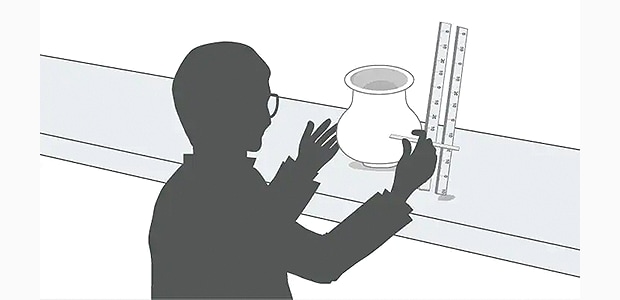
Measurement Difficulties
When constructing a digital archive, it is necessary to acquire information from the artifacts or materials that is as true to the originals as possible. When surface color and texture information is required, the below problems may occur.
Measurement error and inability to measure some locations
In conventional measurement using handheld tools, the degree of accuracy to use when recording cracks and chips is left to the judgment of the person who creates the measurement drawings. As a result, accuracy varies depending on who performs the measurement. In measurement using photographs, recorded information such as three-dimensional shapes and colors is close to that obtained by the naked eye, however the 3D information lacks accuracy due to distortion caused by the lenses. Additionally, measurement and recording using the above methods requires a tremendous amount of time, slowing down data collection.
Inability to acquire color and texture information
Texture information of cultural properties such as earthenware and fossils is very important in order to understand the technology and culture of the period. Handheld tools can measure shapes, but cannot record surface color and texture information. It is also difficult to acquire correct information from photographs due to distortion caused by lenses and to shadows caused by the lighting direction.
Risk of damage
Original artifacts and materials can be damaged during measurement as a result of contact with calipers, dividers, or contour gauges. Some cultural properties are even untouchable for religious reasons, and thus are difficult to measure.
Contact us to learn more about how our advanced technology can help take your business to the next level.
Contact Us
Improving Efficiency with the VL Series 3D Scanner CMM
In a digital archive, the shape of the original items must be measured in as much detail as possible. This requires high accuracy in shape measurement. Acquiring color information is also important. When the number of cultural properties that need to be measured is large, highly efficient operation is also needed.
To address these measurement needs, KEYENCE has developed the 3D Scanner CMM VL Series. The VL Series captures the 3D shape of the entire target surface with a high-definition scan that does not contact the target. A 3D scan of the target on the stage can be completed in as little as one second, for high accuracy measurement of the 3D shape. Color information can also be acquired at the same time. This makes it possible to acquire high-precision measurement results instantaneously and without variation. Some specific examples of the advantages are explained below.
Advantage 1: Capable of highly accurate non-contact 3D measurement from all directions.
Even with an item that has a complicated shape, the VL Series can capture the 3D profile from 360° just by placing the item on the stage and scanning it. No positioning is required, and high-accuracy measurement can be performed quickly even by someone without knowledge or experience of measuring instruments.
The large, high-resolution CMOS camera scans up to 16 million points and can measure the true shape of the object. Complex shapes that were impossible to measure before can now be measured and analyzed in high definition.

The 3D profile can be captured from 360°
Advantage 2: Capable of non-destructive analysis of thickness and cross sections.
Cross-sectional shapes, which were previously difficult to measure by non-destructive means, can now be measured without cutting the original items. Any desired reference plane can be set in the acquired 3D data for cross-section analysis from any direction. This enables more detailed analysis of both the entire target and the fine details. Data acquired in cross-section measurement can also be converted to DXF data and STL files that are viewable in 2D-CAD. This greatly contributes to replica creation using 3D printers or similar equipment.
Capable of measuring various parts and cross-sections.
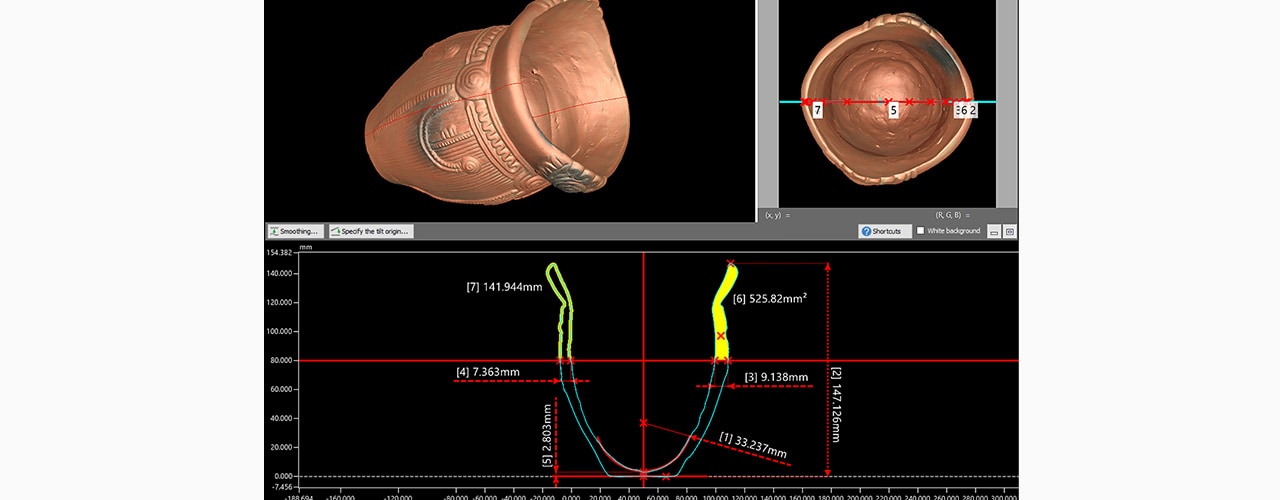
Advantage 3: Capable of acquiring color information.
A large, high-resolution CMOS camera can also acquire color information, something which is difficult with conventional 3D scanners. Adding color information to realistic 3D data results in information that is more faithful to the original item, enabling accurate analysis.
Discover how the VL Series 3D scanner revolutionizes quality control across industries, ensuring unmatched efficiency and reliability in your measurement processes. Request a demo today!
Capable of acquiring color information.

Discover more about this product.
Click here to book your demo.

Summary: Improved Efficiency in the Creation of Digital Archives
With the VL Series, high-speed 3D scanning is performed to capture accurate 3D shape and color information of the original item. The VL Series offers the following advantages:
- No cumbersome positioning is required for measurement. Measurement can be performed simply by placing the original item on the stage and clicking a button. Multiple items can also be scanned simultaneously, improving the efficiency of measurement work.
- Because the VL Series acquires surface data, the entire target profile can be identified. Non-destructive profile measurement of cross-sections and the desired locations is possible, allowing more detailed analysis.
- The VL Series does not contact the items it measures, making possible safe and highly accurate shape measurement even when the original items are untouchable for religious reasons or are made of fragile materials.
- Color information can be acquired at the same time, making it possible to create replicas that are faithful to the original.
The VL Series is a 3D scanner that achieves high precision and easy operation. It accurately acquires shape and color information from the original item at high speeds, dramatically improving the efficiency of work for digitalization, measurement, and analysis in digital archives.
Get detailed information on our products by downloading our catalog.
View Catalog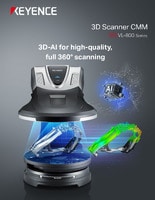

Related Downloads
Related Products
Scroll

